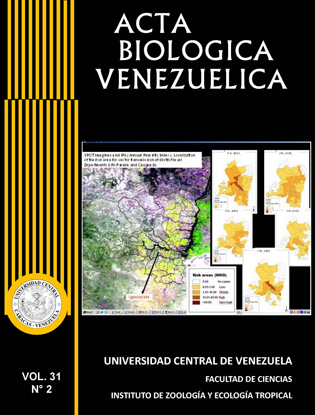Lutzomyia neivai, VECTOR OF LEISHMANIASIS IN NORTHWESTERN ARGENTINA: PRELIMINARY DISTRIBUTION MAP
Palabras clave:
Vector distribution maps and models, Leishmaniasis in Northwest Argentina, remote sensing and vector-borne diseases.Resumen
In the last 20 years, it has been evidenced an association between vector-borne re-emerging diseases, such as cutaneous leishmaniasis (CL), and environmental changes mainly due to deforestation, unplanned urban growth and climate / environmental factors. In this study we developed a model to generate a map of potential distribution of vectors in the north-western hyper-endemic CL region of Argentina and to plan spatially focused strategies for surveillance and prevention of CL. Ninety-eight CDC-like light traps to capture sand flies were placed in National Parks and areas of influence of Salta and Jujuy provinces. A total of 12,079 sand flies were captured and subsequently identified as Lutzomyia neivai (85.6%), L. migonei (11.6%), L. cortelezzii (2.6%) and L. shannoni, L. quinquefer y Brumptomyia spp (less than 0.1%). The former two species had epidemiological importance because are the known vectors of Leishmania braziliensis. In the analysis, bioclimatic variables and elevation were considered. We used the method of Genetic Algorithm for Rule-set Prediction (GARP) and the Maximum Entropy Modeling System (MaxEnt). As concern the last modelling system, the variables with the highest relative contribution were seasonal rainfall (30.5%), seasonal temperature (21.4%) and elevation (24%). The accuracy was evaluated by the value of the area under the curve (AUC=0.996)). This approach, once validated, would allow us to forecast and assess the impact of environmental changes on CL risk and to design control strategies. Moreover, predictive models based on remote sensing and captures of vectors in sentinel sites would be developed to provide an early warning system for disease outbreaks.


